
Part 3 — Mastering Film Genres: The Definitive Screenwriter’s Guide
We’re back! Welcome to part 2 of our guide to writing your very own horror script. Be prepared for more scares and tips that’ll leave you quaking in your boots, and hopefully inspired to turn your horror movie dreams into screams!
To conclude our guide on the horror genre, we’re here with everything you need to create memorable and complex characters, and building a rich environment and atmosphere to push your scares to the next level.
We’ll end our blog with a flourish by revealing all the top tips you need to effectively edit and revise your horror screenplay. If you haven’t checked out our first Dreams to Screams blog on how to write a horror script, you’d better head over there first.
So, what are we waiting for?
Creating Memorable Villains and Monsters
Let’s face it, we all watch horror movies for the villains and monsters. How will they terrorize the characters? Will they succeed in their horrific acts, or will they be beaten? Are they supernatural evils, scares that haunt our nightmares, or someone down the street?
Let’s dig deep into some of the greatest horror villains of all times, what makes them effective, and how we can create our own.
Characteristics of Effective Horror Villains
While many horror villains are human or at least recognizable to us in some way, there is always something subverted in their nature that makes them terrifying.
Many of them are a blend of the familiar and monstrous, possessing a sense of the uncanny. Immediately, we are thrust into a sense of insecurity as an audience, feeling unsettled. Even if they haven’t done anything remotely scary, we are immediately scared of them; they are relatable yet terrifying.
For the latest news in horror, check out Bloody Disgusting
Take characters like Pennywise. He is recognizable as a clown, which most of us have been used to seeing since childhood. Yet there is something askew with his nature and appearance, making him automatically spooky.
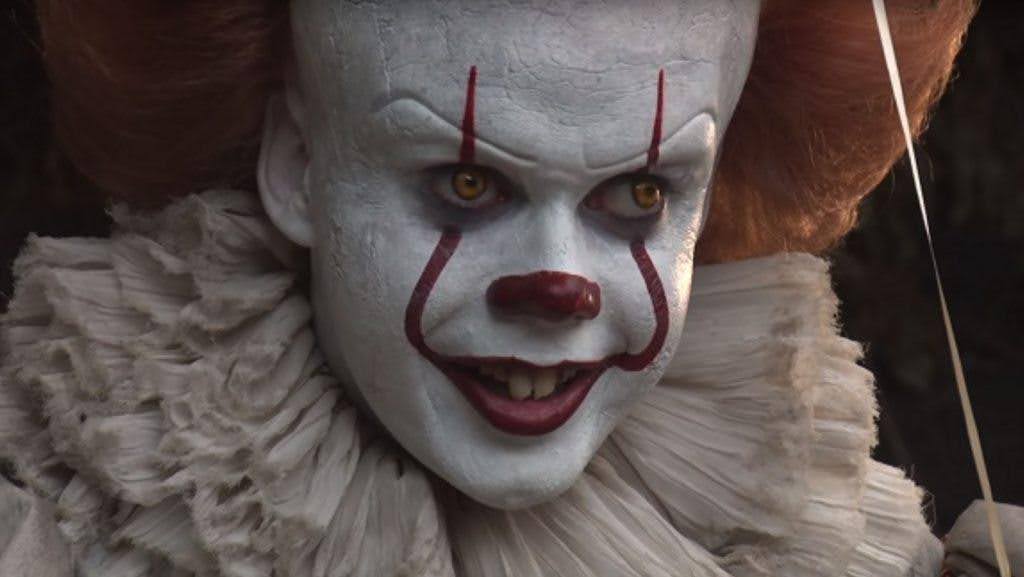
We can recreate such a feeling in our own audiences with our horror villains. By turning something familiar on its head, we can create a sense of unease early on.
Other famous villains, we never see at all! Mystery and ambiguity are key in horror movies, so why not have an invisible antagonistic force? Invisible villains, such as in Blair Witch (2016), drives the fear of the unknown in an audience. In Blair Witch, we see snatches of the possible villain, heightening the horror factor.
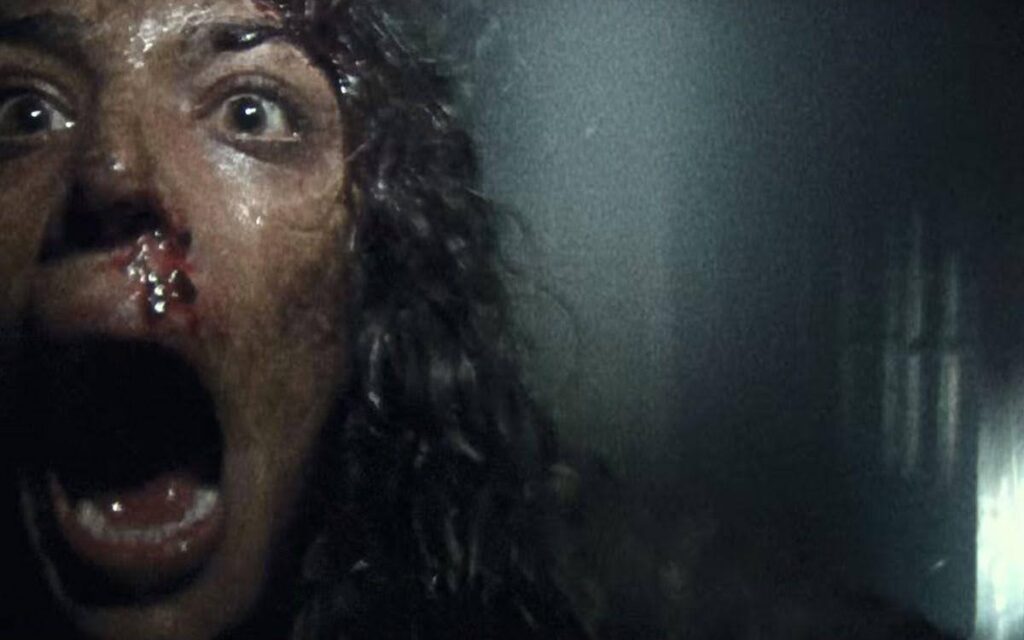
Atmosphere can make or break your horror script.
Use Celtx to plan your scenes with precision.
No shaky endings here – sign up today!
Effective villains also seem unstoppable or relentless in their pursuit of evil. This not only creates further conflict for the characters to overcome, but also a sense of inevitability – it’s just a matter of how and when the villain will succeed, which keeps us on the edge of our seats.Take characters like Jason Voorhees in the Friday the 13th franchise, who seems invincible and has resurged in many sequels to the original 1980 installment.

Horror villains don’t just have to be evil for the sake of it. Psychological depth and an insight into their fears, traumas and desires can make them more compelling. Hannibal Lector is a prime example due to his brilliant but twisted mind.
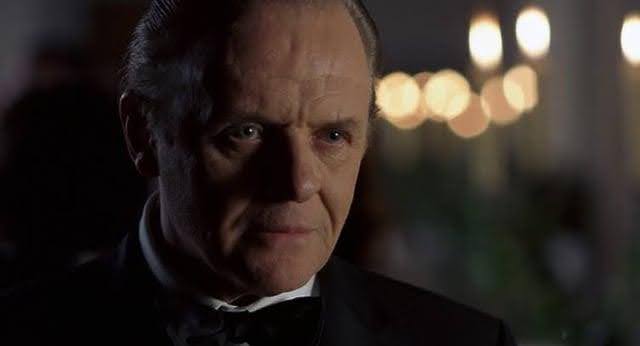
By adding layers of complexity to our villains, whether they be human, zombies, demons or witches, we can enhance the effect they have on audiences. The Witch (2015) reimagined Puritan fears and folklore, placing the subject matter deep in reality and providing historical context.
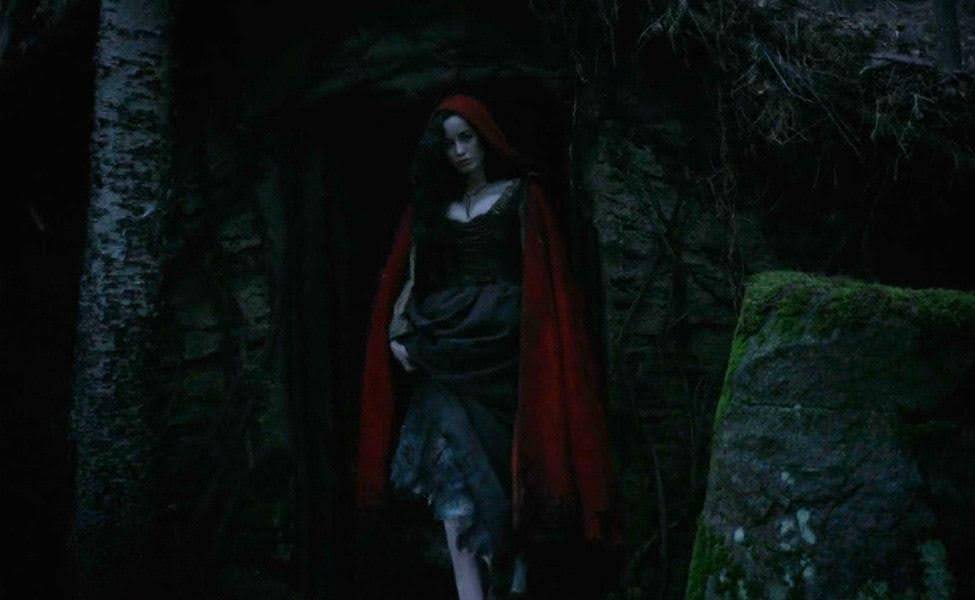
Of course, all the above are great approaches to creating your horror villain. Horror is a genre that thrives on archetypes that should be balanced with originality. Classic archetypes such as vampires, werewolves, ghosts and serial killers have been persistently popular, with their own narrative rules.
To keep an audience engaged, subvert archetypal expectations and twist the established traits into something new. Swedish horror Let the Right One In (2008) did this especially well with the vampire.
Writer John Ajvide Lindqvist created a vampire child who forms a deeply emotional bond with a human. It also begs the question whether the villain is really evil, commenting on the gray areas that can arise.
Rotten Tomatoes scored the film 98%, with the critics’ consensus favorable.
Let the Right One In reinvigorates the seemingly tired vampire genre by effectively mixing scares with intelligent storytelling.

This movie also combines horror with romance, another way to balance originality with archetypes and create something fresh. Get Out (2017) also did this successfully, but with theme, adding racial tension and social commentary to the psychological horror genre.
Related: Tips for Shooting and Lighting Horror with Director Mike Pecci || No Film School
How to Write Compelling Villain Backstories and Motivations
We recommend approaching your villains as you would with any character, but focus on the negative aspects to shape their path into evil.
Start by rooting their motivations in trauma or fear, linking their goals to personal experiences, so their actions seem logical. They could seek revenge or control and won’t stop until they get it, justifying their actions along the way and believing completely in their life philosophy, like Hannibal Lector, for example.
Your villain should always be grounded in the environment, society and history around them. This will help highlight their ‘recognizable’ side and enhance their authenticity as a villain. The strict religious beliefs of the family in The Witch are great examples of this.
Bring your villain to life: Use Celtx’s character development tools to craft the perfect backstory and motivations for your horror villain. Ready to pull the lever?
Click here to sign up.
Developing Complex Characters
Relatable characters are crucial in horror, providing the emotional anchor for the audience. When an audience identifies with a character, the stakes of the movie feel so much more real!
If, as screenwriters, we establish relatable traits, fears and desires, our characters evoke more empathy. The protagonist in The Babadook (2014) is a struggling single mother, with whom many people can relate. In turn, this makes the horror she endures even more terrifying.
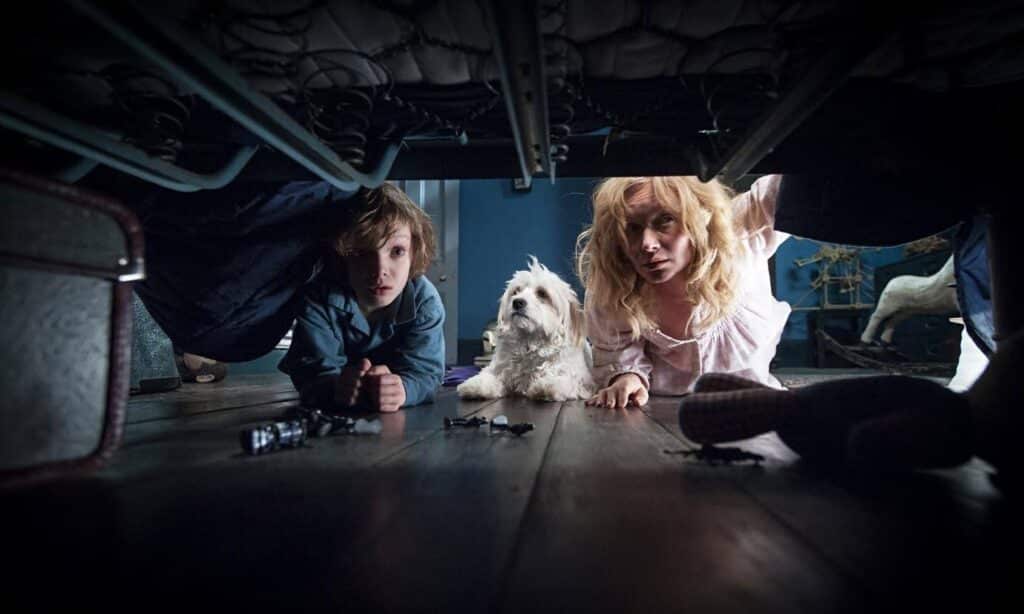
But how do we create these characters for ourselves? Well, like our villains, we need to ensure our characters have relatable traits, strengths and flaws with clear goals that drive them forward through the plot.
The characters in A Quiet Place (2018) are a family with the goal of survival, the parents doing everything possible to protect their children. The primal human instinct of protecting the young is something that is with all of us, hence why these characters are so powerful. We naturally want to root for them!
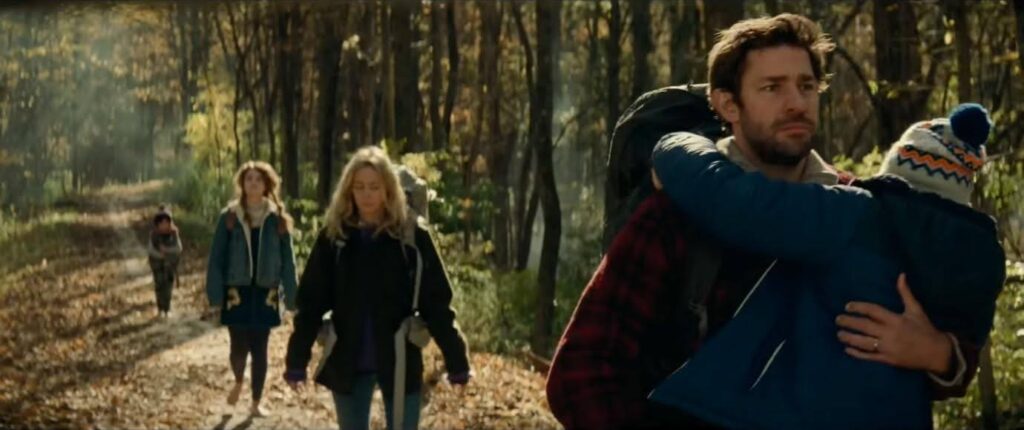
Of course, there are always the characters we want to root against, whether they’re the villain of the piece or just down-right unlikeable. While some have traits that help us relate to them, others will need to possess qualities that provoke contempt or fear.
To create these sorts of characters, we recommend using traits deriving from arrogance, cruelty or selfishness. Through these, you can create tension, making their inevitable downfall even more satisfying.
Whether your characters suffer their downfall or succeed in their goal, they need a character arc to get them there. Arcs come in all sorts, from heroes who begin as naïve and weak, but grow to become a resilient and strong figure. Through facing their fears and working through the obstacles thrown in front of them, the character ultimately changes.
On the other hand, there’s nothing wrong with a juicy downfall and a character who spirals into a pit of madness or corruption. Jack Torrance in The Shining begins as well-meaning but flawed, who succumbs to the supernatural influence of the hotel, transforming him into a monstrous figure.
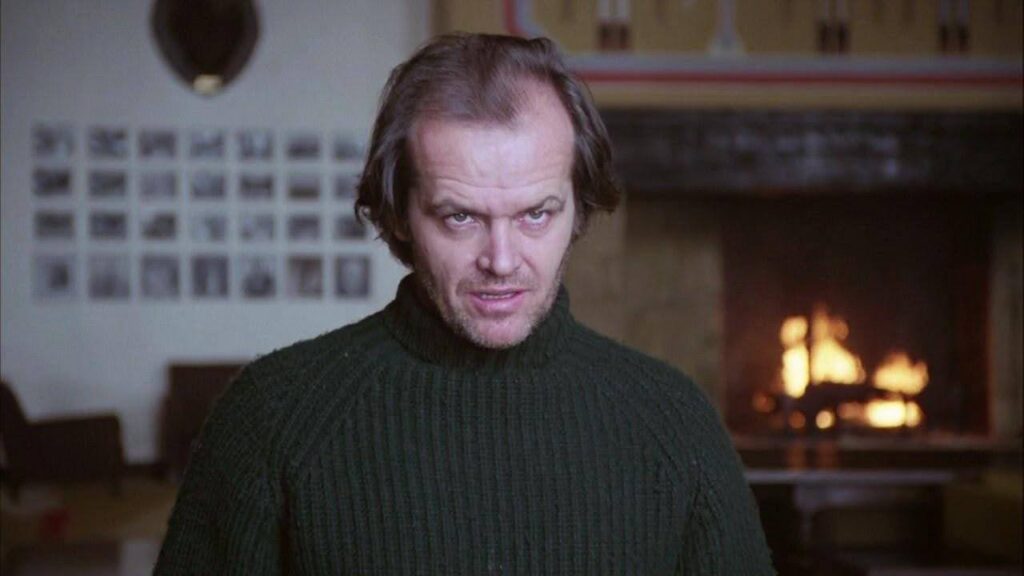
Whatever type of arc you choose, focus on key moments of change in each character’s journey. When does their mindset shift? What makes them change? What moral dilemmas must they face? How do their interactions with other characters shape their ongoing development? By answering questions like this, we ensure our character’s travels feel authentic and engaging.
Setting and Atmosphere
Horror relies a great deal on its setting to create conflict and fear. Feelings such as isolation, danger or dread can be evoked purely from the setting, adding to the characters’ plight.
Many horrors are set in one location, making full use of the environment to incite the scares themselves or elevate them to the next level. Think an abandoned house, a claustrophobic basement, a dark forest – you get the idea.
Setting also relies on multiple senses. Focusing on what your characters can hear, smell and feel is a great starting point in building an immersive atmosphere. Not only that, but it also draws your audience into your world, making the horror feel more immediate and real.
Examples like flickering lights, eerie silences, unsettling sounds and abnormal smells can help build tension and dictate the pace of your movie, whether it’s a slow burner scene or a jump scare.
From a screenwriting perspective, we want to avoid too much flowery language when describing our setting. Concise and impactful is the key! Here is where formatting is your best friend. Utilize short sentences for pacing, and break up your longer descriptions with action lines or dialogue to maintain flow. You don’t want your descriptions to overwhelm the narrative.
For a more intensive dive: Screenplay Format Essentials: How to Professionally Structure Your Script
Take a look at the opening scene of the Bird Box screenplay. Here we see a brief but impactful description of the setting. Notice how the description is among the action, focusing on what is actually happening and the opening of the story.
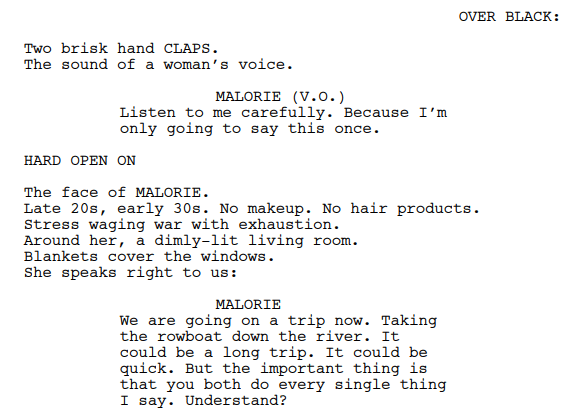
To immerse yourself in the whole screenplay, click here.
Dialogue and Horror
Like all movies, horror dialogue should feel natural while enhancing terror and fear. Consider how your characters’ words will foreshadow events, reveal secrets or deepen the sense of dread. Could a casual conversation take a dark turn?
What a person says can reveal a lot about who they are, their beliefs, fears and motivations. A confident assertive character could come across as a leader, while one who hesitates or stutters may appear anxious. These are rudimentary examples, but you know what we mean!
But of course, dialogue is also about what characters don’t say. Subtext is important to keep audiences guessing and wondering what lies beneath the surface. We don’t express everything we’re feeling just when we speak, so our characters shouldn’t either.
It can be tempting to reveal secrets through dialogue, but use this sparingly. When a character discloses vital information, ensure it has a significant impact on the plot or character dynamics. This doesn’t have to be a loud reveal, but a drip feed of information in quieter moments.
Short exchanges can heighten anxiety, while longer ones build anticipation. Interruptions, overlapping dialogue or sudden tone shifts are fantastic tools to create urgency.
Climax and Resolution
The climax is the turning point of your movie, the height of tension that you’ve been building up to. This should be where your characters face the height of their fears. While the climax is one of the bigger moments in the movie, it should be gradually built up to, allowing the audience’s anticipation to grow.
This build up will be through character growth, interactions, and a gradual closing in of the threat. Everything we’ve talked about so far in our dreams to screams series will take you to this point.
Closure usually comes with the resolution, but horror isn’t usually a genre with a wholly happy ending. Horror thrives on leaving audiences with lingering dread. A great technique to use for writing your resolution is to balance tying up loose ends with a desire to evoke lasting emotions.
After the climactic moment, use your resolution as an opportunity to focus on character reactions and the consequences that have arisen. Both dialogue and action combined will help you do this.
Let’s return to Bird Box. The resolution focuses on closing the protagonist, Malorie’s, arc. Finally, after five years, she and the children can take their blindfolds off, now safe in the community. After refusing to name the children, she does so, providing closure both for her and the audience, and emphasizing the importance of human bonds.
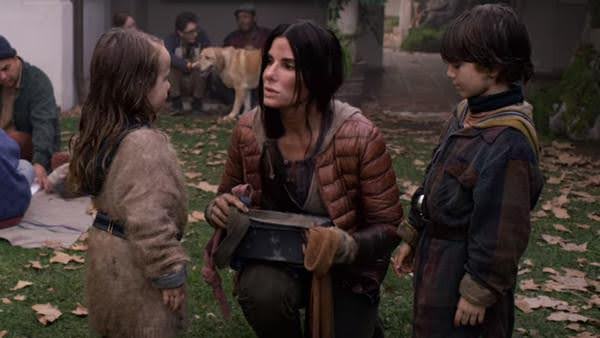
Editing and Revising
Now that you’ve written your horror script, it’s time to edit and refine it as much as possible. We recommend completing several ‘passes’ of your screenplay, where you focus on one element at a time. For example, read through your script looking for any pacing or consistency issues in your script. Next, focus on your character arcs, your plot, and dialogue to ensure it’s authentic and natural.
Look out for common pitfalls in your screenplay to ensure you’re not relying on cliches or predictable plots that your audience will sniff out in seconds. Focus on subverting convention and taking horror tropes to the next level.
Feedback is also invaluable. Share your script with trusted peers or mentors who can give you constructive criticism. Be open to suggestions and don’t be afraid to make changes if you need to.
It’s important to remember that there are only so many edits you can do. Learn to know when your script is done and when it’s time to move onto the next project.
Conclusion
Crafting a compelling horror script requires careful attention to character development, atmosphere, and dialogue. By creating relatable characters and villains, you enhance the emotional stakes, making the audience care about their fates.
Building a chilling setting immerses viewers, while skillfully written dialogue heightens tension and reveals character traits. As you approach the climax and resolution, strive for a balance between closure and lingering dread for a lasting impact.
We’d love to hear from you! Share your horror scripts, ideas, or drafts in the comments below—let’s inspire each other!
Check out our resources here at Celtx to help you organize and visualize your horror projects. And remember, this is just part of our ongoing series on screenwriting; there’s plenty more to come!
Focus on your story, not your formatting.
Let Celtx’s Script Editor automatically apply all industry rules while you focus on the story.
<< Go Back — How to Write a Horror Script Part 1
Go Forward — Beyond the Stars: How to Write a Science Fiction Script >>
Explore the Full Series:
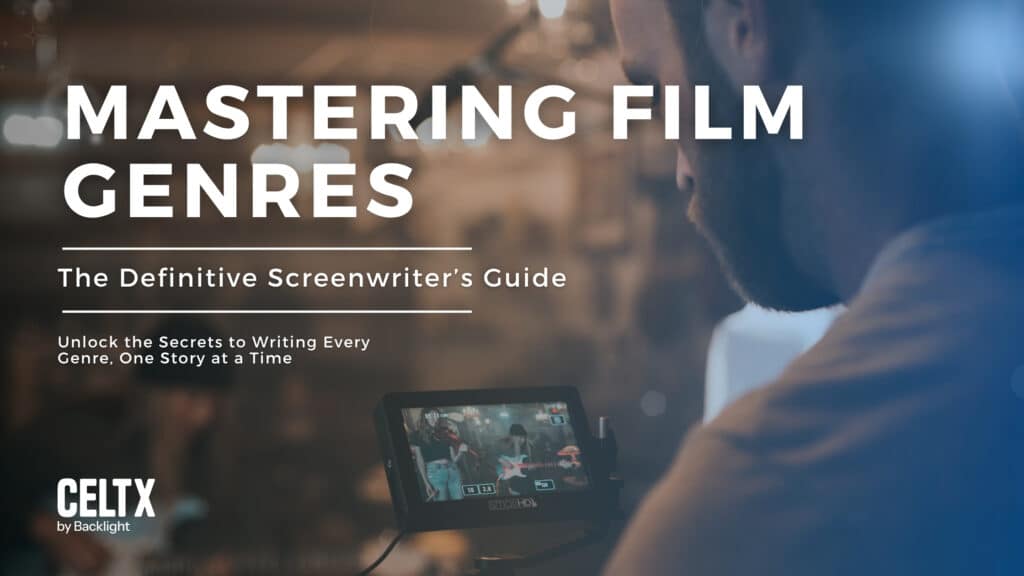
Mastering Film Genres: The Definitive Screenwriter’s Guide
Explore the bigger picture of genre writing—from structure to tone to audience expectations—and see how every genre connects back to the fundamentals of great storytelling.
Click here to continue…
Follow us on social media for more conversations about all things screenwriting.
